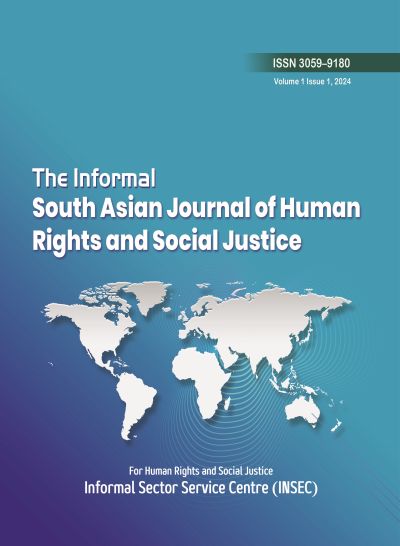Hindutva: Myths and Reality
DOI:
https://doi.org/10.3126/informal.v1i1.69161Keywords:
Hindutva, repression, minorities, myth, realityAbstract
Since the 1970s, Critical Discourse Analysis (CDA) has been widely applied to the examination of various discourses. This paper utilizes CDA to investigate how the ideology of Hindutva undermines the concept of nationhood and threatens racial and gender harmony in India. Specifically, this article critiques monumental grand narrative texts such as Manu’s Manusmriti, Golwalkar’s We or Our Nationhood Defined, and Savarkar’s Hindutva. These texts propagate a public discourse designed to convey specific political agendas and ideologies, influencing the opinions of their adherents. Using Fairclough’s Three-dimensional Model as the theoretical framework, this study analyzes both classical and modern Hindutva texts, thereby exploding the pervasive myths and exposing reality. The analysis focuses on how these texts attempt to marginalize and displace racial, cultural, and religious minorities in India. The findings of this study reveal that proponents of Hindutva ideology, particularly organizations like the RSS and BJP, are steering the nation towards intolerance. This trajectory is resulting in the repression of minorities and marginalized groups within India. Through this examination, the study highlights the pervasive influence of Hindutva discourse and its detrimental impact on the social fabric of the nation, emphasizing the need for critical engagement with such ideologies.
Downloads
Downloads
Published
How to Cite
Issue
Section
License
Copyright (c) 2024 The Author(s)

This work is licensed under a Creative Commons Attribution 4.0 International License.
This license enables reusers to distribute, remix, adapt, and build upon the material in any medium or format, so long as attribution is given to the creator. The license allows for commercial use.




